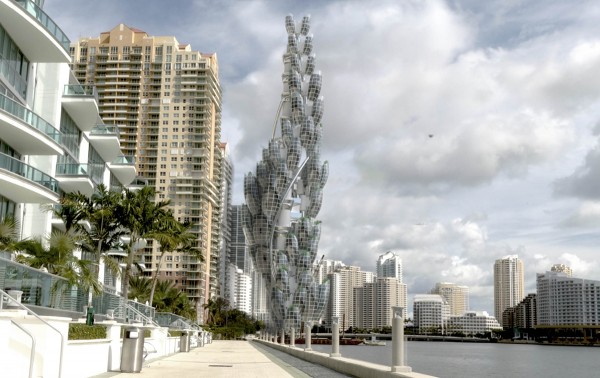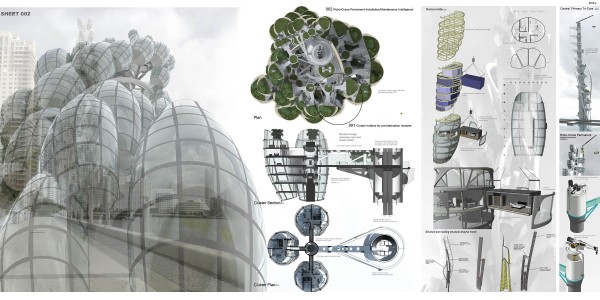Editor’s Choice
2015 Skyscraper Competition
Allstair Lillystone, Shonn Mills
United Kingdom, Singapore
A xerophyte is a type of plant that has evolved over time to adapt to the dry conditions in a desert. The adaptation or evolution of a xerophyte is to store significant amounts of water to allow the plant to survive over long periods without water.
Building design and construction has developed create fixed objects that serve a function over time. This approach is in line with human-kinds basic needs for shelter and stability but the result are products that have a limited to ability change without significant expense. This design approach has been adequate for the majority of human history as the rate of change for the way we live has been nearly in line with the products of our architecture. The past several decades we have seen an extreme acceleration and change in the ways we work play and communicate and our approach to design of the places we build has also evolved with the way we live. With the pace of technological change and the effect on the built environment the design is bringing the old new together to produce a creative solution and balance between technology and nature. the building is defined by its ability to change, a philosophy that seeks to create spaces which can evolve and change with the needs of its inhabitants and the constraints and challenges imposed by its surroundings.
The Xerophyte Tower uses conventional high reside technologies coupled with some of the latest advances in materials and science. The backbone of the will be a central core used as the anchoring point and primary structure.
The tower utilises conventional high rise technology coupled with advances in material science and. The backbone of the tower will be a central core that is used for the primary structure. This central spine will service to provide a portion of the vertical movement and servicing for the tower. Orbiting the perimeter of the core will be secondary structures which are envisioned to be completely modular secondary units. Constructed completely off-site in factories with the use of renewable resource’s such as forested timber.
These modular secondary units will provide all of the accommodation for the tower and can be completely replaced. This will allow the finishes and even the use of the accommodation on the tower to change with climatic and economic requirements as the building moves through time. The placement and replacement of the modular accommodation will be completed by a permanent robotic crane system constructed in the crown of the central core. This robotic crane, operated by the central BMS and eventually potentially an automated system will provide and manage the maintenance of the building as well as the long-term adaption of the space.

















